The Tree Scientist’s Toolbox
When you walk the trails at The Morton Arboretum, you’re likely to run across signs that this is a research institution as well as a place of beauty. Odd-looking devices that hang on tree trunks or stick up from the forest floor are tools of the Arboretum’s scientists. They’re being used to gather data to explore questions about how trees grow, both above the ground and below it; how trees fit into their ecosystems with other organisms; and how they respond to changes in their environment.
Here are a few of the scientific tools you might see at the Arboretum. Since these devices are carefully set and positioned, please admire them from a distance and don’t disturb them.

Litter basket: Looking a little like butterfly nets, these net bags collect leaves, seeds, and cones as they fall from the trees. Forest ecologists can estimate the amount of resources trees use to build leaves each year by assessing how much litter is collected in a net. This tool also allows soil scientists to learn more about what goes into building the soil where trees’ roots live. The baskets are checked and emptied every week in the fall, and every two to four weeks the rest of the year.
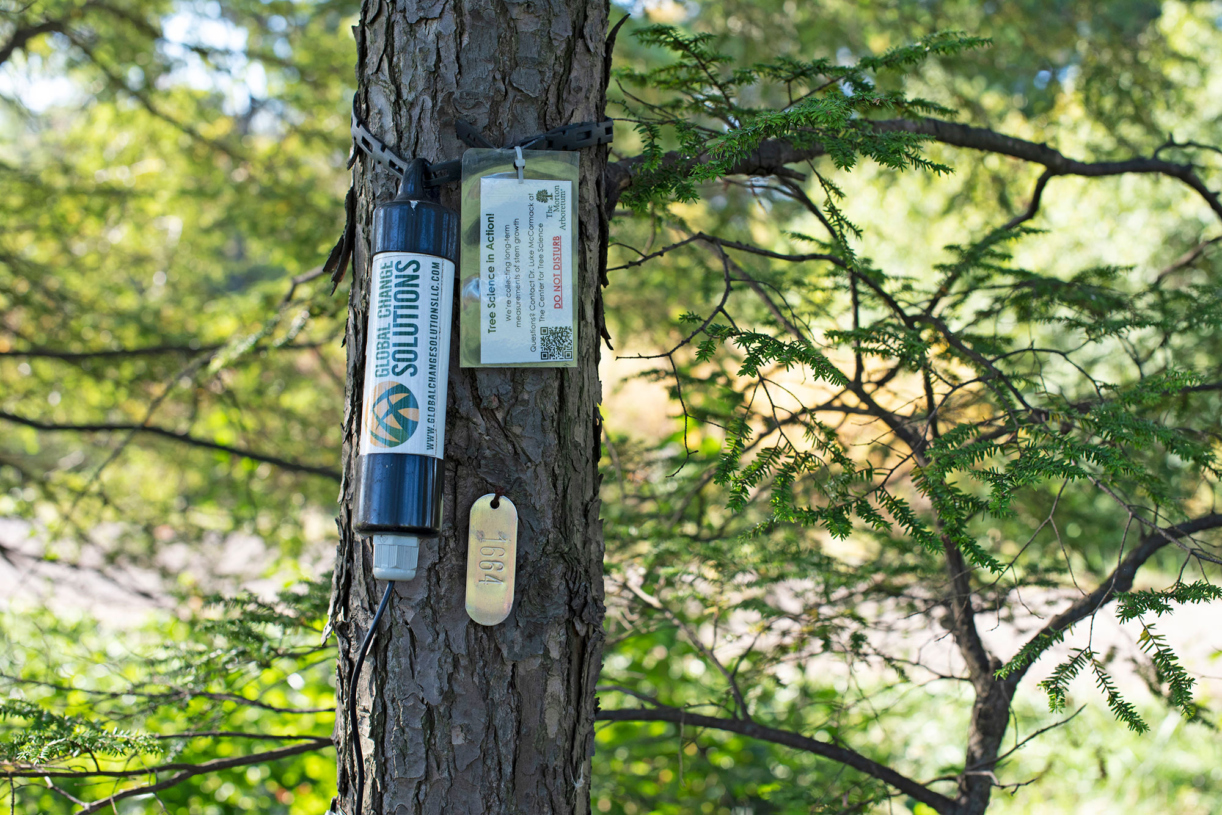
Digital dendrometer: The mass of a tree’s trunk might look stiff and solid, but, in fact, it is always expanding and contracting, although the changes are too small for us to see. These devices measure and record those fluctuations. The data can tell scientists about the tree’s growth and how it responds to water availability, weather, and other conditions. Digital dendrometers are attached through the bark into the wood. An older style that visitors may have seen at the Arboretum uses a less direct method, linking a dendrometer to a steel band wrapped around the tree’s trunk that flexes with changes in its diameter.
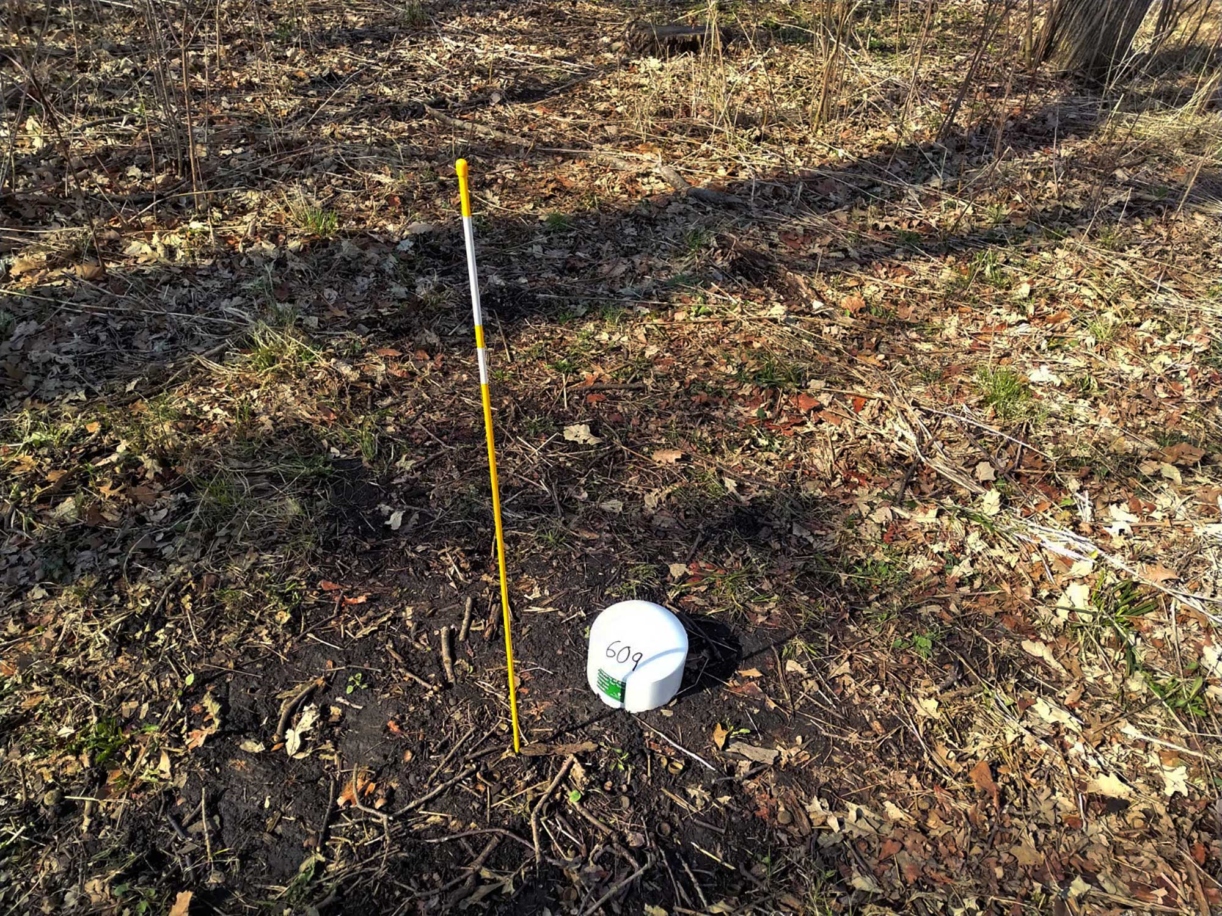
Root monitor: As much as half of a tree’s mass may be underground, and much of its growth and life take place there. But it’s hard to get a look at living roots if you’re not a mole. Root scientists study and collect data about this underground world through devices called minirhizotrons, which appear to passersby as round plastic caps on the ground. Beneath each cap is a transparent tube reaching about 3 feet down into the soil. Every two to four weeks, a specialized camera is inserted to record an image of the soil and roots through the clear walls of the tube, so scientists can see and track roots’ growth. The caps protect the tubes from light, rain, and curious coyotes.

Sap flow monitor: The flow of water through a tree in the form of sap constantly adjusts to changes in its environment. For example, on a hot, sunny day, when leaves are busy with photosynthesis and are releasing lots of water vapor into the air, more sap will be drawn up from the roots. On a cloudy day, the flow slows down. Sensors attached to tree trunks, powered by nearby solar panels, continuously measure sap flow to provide data that informs scientists about changes in leaf activity, drought stress, responses to weather, and other conditions.
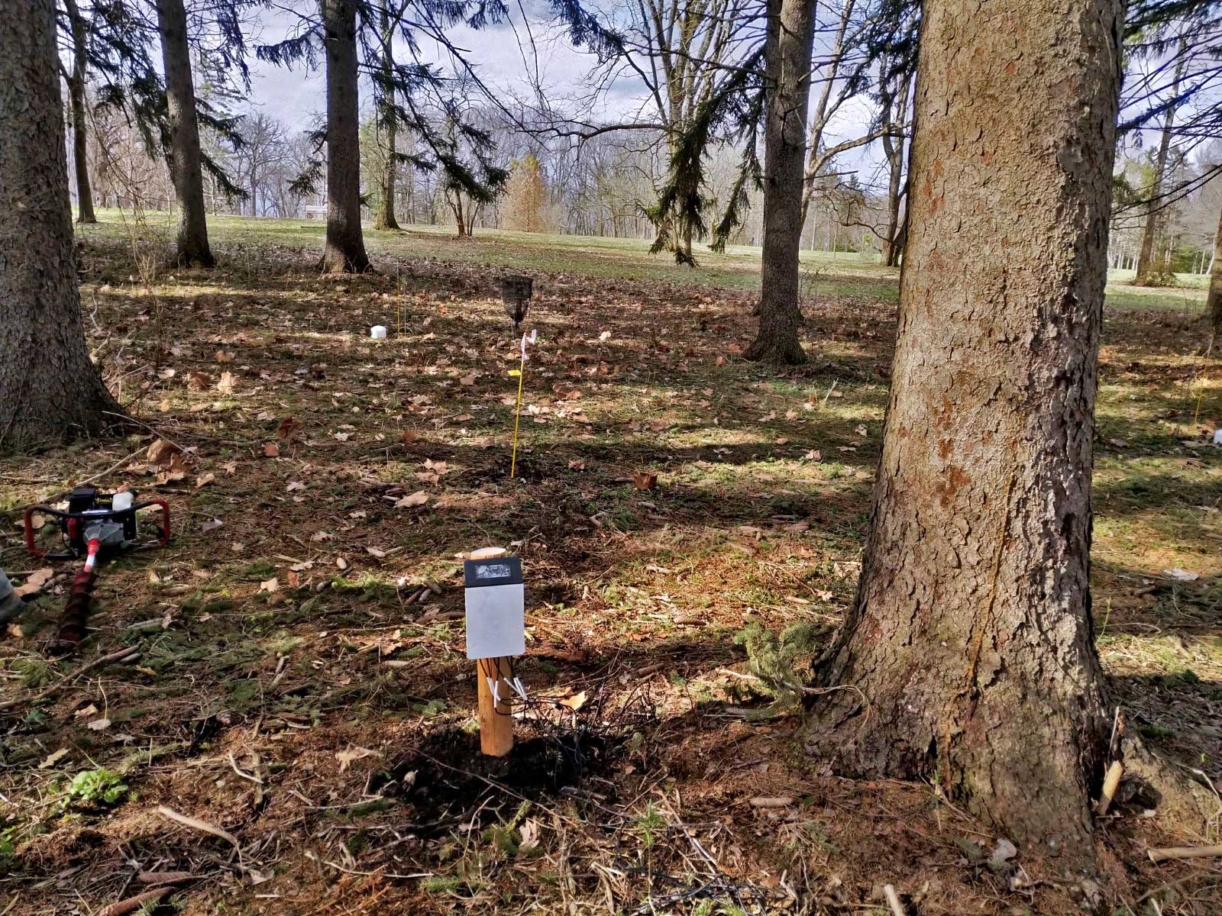
Soil probe: The growth of a tree’s roots and leaves depends on the conditions of the soil in which it lives. Soil probes buried in the ground sense temperature and moisture and feed the data to aboveground devices called data loggers. Scientists can use this data to understand how soil conditions affect tree growth.
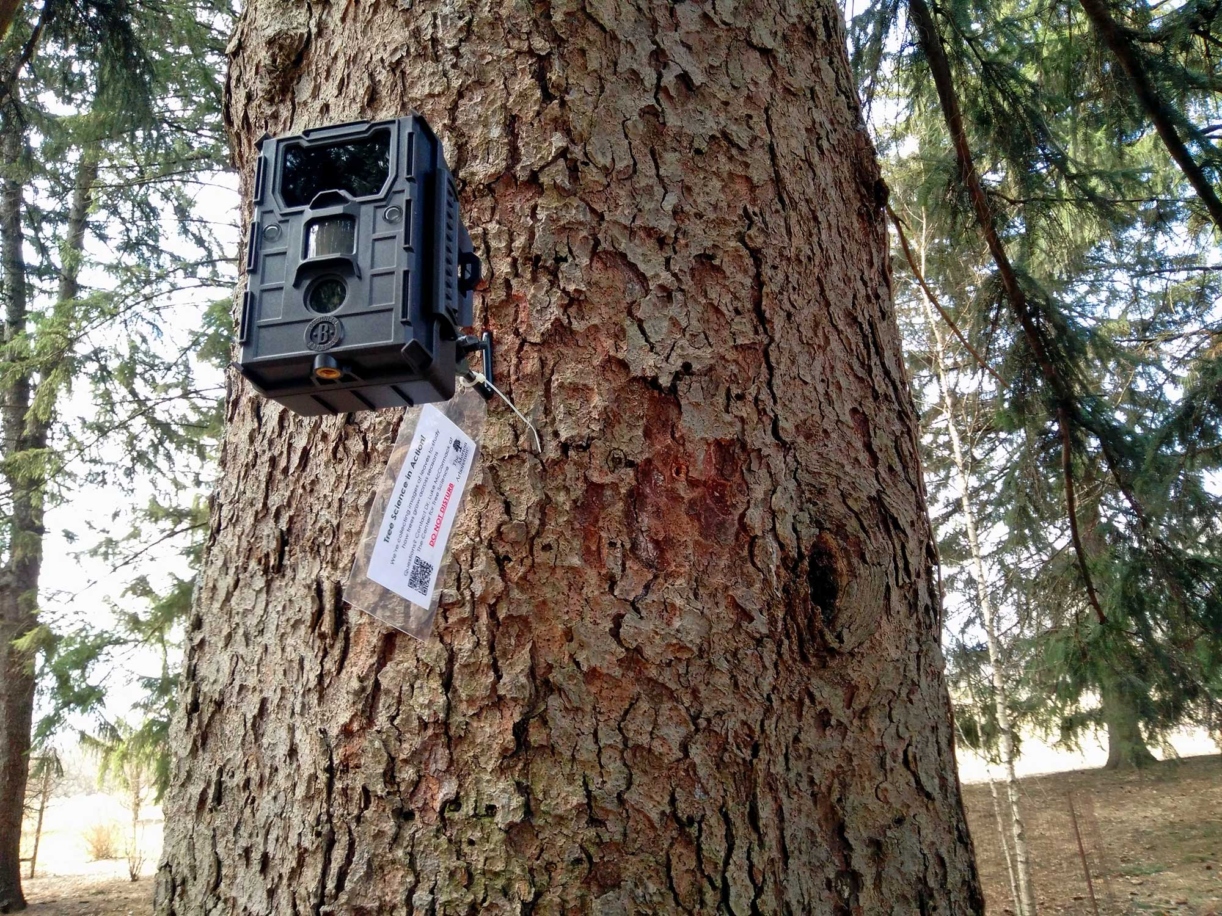
Leaf growth camera: These cameras—similar to trail cams, but with the motion sensors disabled so they don’t snap wildlife or visitors—are aimed at large groups of trees to take a series of time-lapse images throughout the growing season. The images record developments in the trees, such as when leaf buds first open in spring, when the tree canopy reaches its full green growth, and when leaves change color and drop in fall. Arboretum scientists dub them “PhenoCams” for phenology, the study of the timing of events in nature.
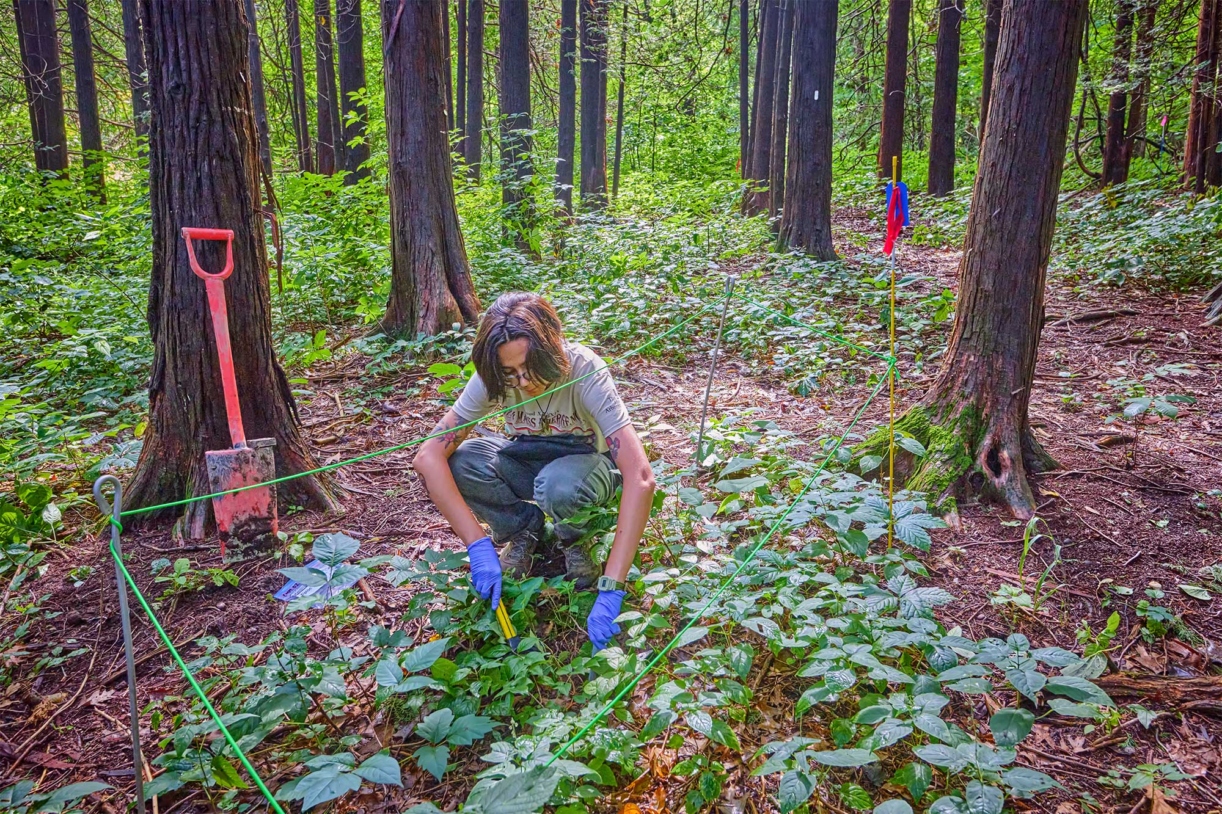
Monitoring plots: In various places around the Arboretum, small plots, usually 1 meter by 1 meter, are roped off in the understory below the canopy of tree branches. Periodically during the growing season, scientists record what has changed. In some plots, forest ecologists survey the plants that are growing there. In others, soil ecologists use a tube-shaped tool to pull up cores of soil to look for changes in the symbiotic relationships between trees’ roots and soil fungi. This information can be compared to other data to answer questions about the growth of the entire forest ecosystem, both above- and belowground.